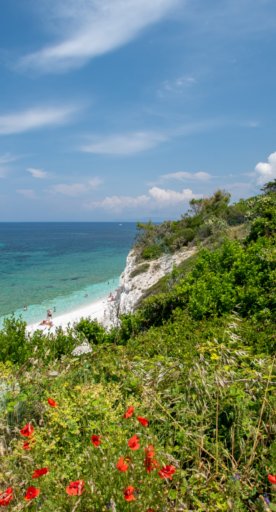Giovanni Fattori Civic Museum of Livorno
A collection of art from Livorno and Tuscany with the works of the Macchiaioli artists on display
The Giovanni Fattori Civic Museum contains a rich collection of art from Livorno and Tuscany in the rooms of the splendid Villa Mimbelli, which became a museum in 1994.
Francesco Mimbelli, a merchant who had come to Livorno for business interests, entrusted architect Vincenzo Micheli with the building of his new residence, which was completed in 1868. Villa Mimbelli has an eclectic style and is spread over three floors. It retains many of the original frescoes and decorations by Annibale Gatti and the Livorno-born brothers Pietro and Giuseppe Della Valle.
All the rooms in the villa (such as the green parlor, the Moorish room and the billiards room) can be visited. The beautiful elements inside the villa include a monumental staircase with ceramic putti inspired by sculptures by Della Robbia.
The building is surrounded by a thriving park that has been expanded over the years and includes the former barns (which host important temporary exhibitions) and an art library.
The collection on the first floor of the Civic Museum includes works by some of Livorno's most important artists, like Enrico Pollastrini, Guglielmo Micheli, Ulvi Liegi, Oscar Ghiglia, Giovanni Bartolena and Mario Puccini.

On the second floor, you will come across the highest artistic expression in the works by Fattori and other leading exponents of the Macchiaioli and Postmacchiaioli school and the Divisionist movement active between the 19th and 20th centuries: Cabianca, Lega, Signorini, Boldini, Tommasi, Gordigiani, Corcos, Cappiello, Grubicy deDragon, Nomellini, Previati, Cecconi, Benvenuti and others.
Giovanni Fattori, who gives the museum its name, was born in Livorno in 1825 and died in Florence in 1908. He developed a new pictorial language that rejected traditional contour lines and color shading and instead adopted synthetic brushstrokes and "spots" of color, hence the term "macchiaioli” (from the word “macchie” meaning spots), that refers to him and other artists with similar characteristics.
His works in the museum include Mandrie Maremmane (Herds of Maremma cattle), La Signora Martelli in Castiglioncello and La Torre Rossa (The Red Tower).
Accessibility information: museofactors.livorno.it










